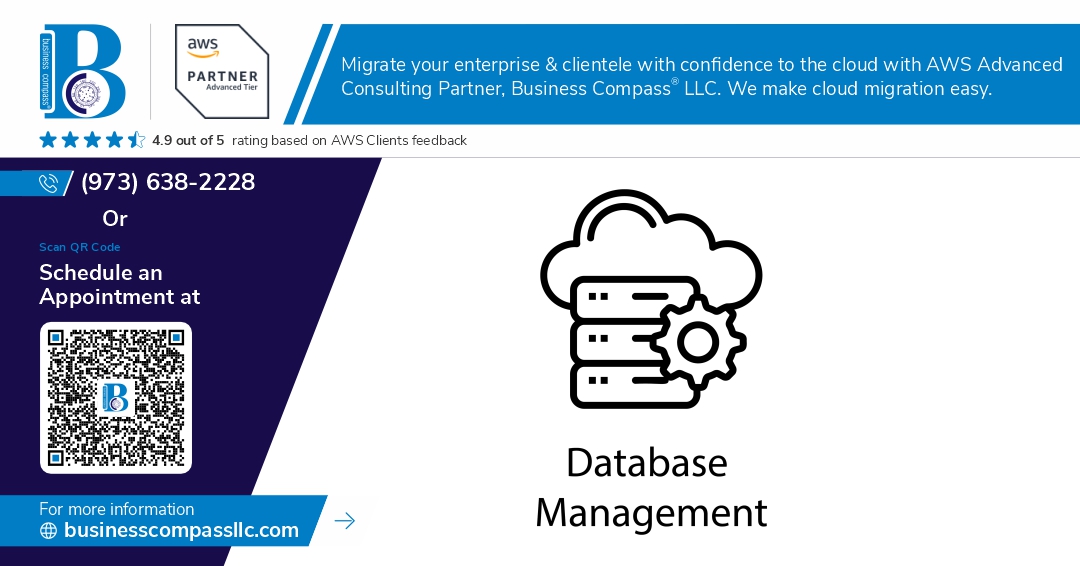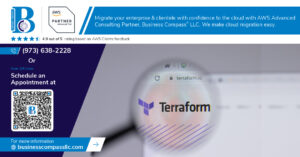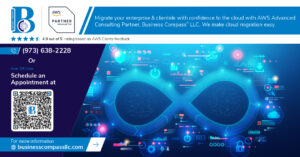In today’s data-driven world, safeguarding sensitive information is no longer optional—it’s essential. 🛡️ As businesses increasingly rely on cloud-based database services like Amazon RDS, DynamoDB, Aurora, Redshift, and ElastiCache, the need for robust compliance and governance practices has never been more critical. But with the ever-evolving landscape of regulations and security threats, how can organizations ensure they’re staying ahead of the curve?
Enter the world of database compliance and governance best practices. Whether you’re a seasoned database administrator or a business owner navigating the complexities of data management, understanding these practices is crucial for protecting your organization’s most valuable asset: its data. From implementing strong access controls to automating compliance processes, there’s a wealth of strategies to explore. But where do you start, and how do you ensure you’re covering all your bases?
In this comprehensive guide, we’ll dive deep into the nine key areas of database compliance and governance for AWS database services. We’ll explore everything from understanding the basics to implementing advanced multi-region and multi-account setups. So, buckle up and get ready to transform your database management approach—because in the world of data, being compliant isn’t just about avoiding penalties; it’s about building trust and securing your digital future. 💼🔒
Understanding Database Compliance and Governance
A. Defining compliance in the context of databases
Database compliance refers to adhering to regulatory requirements, industry standards, and organizational policies when managing and protecting data. In the context of databases, compliance ensures that sensitive information is handled securely, access is controlled, and data integrity is maintained.
Key aspects of database compliance include:
- Data privacy protection
- Access control and authentication
- Data encryption
- Audit trails and logging
- Data retention and deletion policies
| Compliance Aspect | Description | Example |
|---|---|---|
| Data Privacy | Protecting sensitive information | Encrypting personally identifiable information (PII) |
| Access Control | Limiting data access to authorized users | Implementing role-based access control (RBAC) |
| Audit Trails | Recording database activities | Logging all queries and modifications |
B. Key governance principles for database management
Database governance involves establishing and enforcing policies, procedures, and standards for managing database systems. These principles ensure that data is managed consistently, securely, and in alignment with organizational goals.
Key governance principles include:
- Data quality management
- Metadata management
- Data lifecycle management
- Security and risk management
- Compliance monitoring and reporting
C. Importance of compliance and governance for cloud databases
Compliance and governance are crucial for cloud databases due to the unique challenges and opportunities they present. Cloud databases offer scalability and flexibility but also introduce new security considerations and regulatory requirements.
Benefits of strong compliance and governance for cloud databases:
- Enhanced data security and privacy
- Improved operational efficiency
- Reduced risk of data breaches and non-compliance penalties
- Increased trust from customers and stakeholders
- Better decision-making through improved data quality and accessibility
By implementing robust compliance and governance practices, organizations can effectively manage their cloud databases while meeting regulatory requirements and maintaining data integrity.
Compliance Best Practices for AWS Database Services
A. RDS compliance strategies
When implementing compliance strategies for Amazon RDS, consider the following best practices:
- Enable encryption at rest using AWS Key Management Service (KMS)
- Use SSL/TLS for data in transit
- Implement fine-grained access control with IAM policies
- Enable automated backups and configure retention periods
- Use Multi-AZ deployments for high availability
| Feature | Compliance Benefit |
|---|---|
| Encryption at rest | Protects sensitive data from unauthorized access |
| SSL/TLS | Ensures data integrity during transmission |
| IAM policies | Limits access to authorized personnel only |
| Automated backups | Facilitates disaster recovery and data retention |
| Multi-AZ deployments | Enhances data availability and reliability |
B. DynamoDB security and compliance measures
DynamoDB offers robust security features to ensure compliance:
- Use AWS KMS for server-side encryption
- Implement fine-grained access control with IAM and VPC endpoints
- Enable Point-in-Time Recovery (PITR) for continuous backups
- Utilize DynamoDB Streams for audit logging and change data capture
C. Aurora data protection and compliance features
Aurora provides advanced security capabilities:
- Encryption at rest and in transit
- Database cloning for secure testing environments
- AWS Database Authentication for enhanced access control
- Automated patching and maintenance
D. Redshift compliance and data governance
Ensure Redshift compliance with these measures:
- Enable cluster encryption and configure SSL connections
- Use AWS Glue for data catalog and metadata management
- Implement column-level access control
- Utilize audit logging and configure retention policies
E. ElastiCache security and compliance considerations
For ElastiCache compliance:
- Enable encryption in transit and at rest
- Use Redis AUTH for additional authentication
- Implement network isolation with VPC and security groups
- Configure backup and snapshot retention policies
By implementing these best practices across AWS database services, organizations can maintain a strong compliance posture and meet various regulatory requirements.
Implementing Strong Access Controls
User authentication and authorization
User authentication and authorization are critical components of strong access controls for AWS database services. Implementing robust authentication mechanisms ensures that only verified users can access your databases, while proper authorization determines what actions they can perform.
For AWS database services like RDS, DynamoDB, and Aurora, consider the following best practices:
- Use AWS Identity and Access Management (IAM) for centralized user management
- Implement strong password policies
- Rotate credentials regularly
- Utilize temporary security credentials when possible
Here’s a comparison of authentication methods for different AWS database services:
| Database Service | Authentication Methods |
|---|---|
| RDS | IAM, Database-specific |
| DynamoDB | IAM |
| Aurora | IAM, Database-specific |
| Redshift | IAM, JDBC/ODBC |
| ElastiCache | Redis AUTH |
Role-based access control (RBAC)
RBAC is an essential strategy for managing access to your AWS database resources. It allows you to assign permissions based on job functions or roles rather than individual users. This approach simplifies access management and reduces the risk of excessive privileges.
Key benefits of implementing RBAC:
- Improved security through principle of least privilege
- Simplified user management and auditing
- Easier compliance with regulatory requirements
Multi-factor authentication (MFA)
Implementing MFA adds an extra layer of security to your database access controls. By requiring users to provide two or more verification factors, you significantly reduce the risk of unauthorized access due to compromised credentials.
Best practices for MFA implementation:
- Enable MFA for all IAM users with console access
- Use hardware or virtual MFA devices for added security
- Enforce MFA for sensitive database operations
Regular access reviews and audits
Conducting regular access reviews and audits is crucial for maintaining strong access controls over time. This process helps identify and rectify any access-related issues, ensuring that your database security remains robust and up-to-date.
Key steps in access review and auditing:
- Schedule periodic reviews of user access rights
- Utilize AWS tools like IAM Access Analyzer for automated audits
- Remove or modify unnecessary or outdated permissions promptly
- Document and track changes to access controls
By implementing these strong access control measures, you can significantly enhance the security and compliance of your AWS database services.
Data Encryption and Protection
A. Encryption at rest for AWS database services
Encryption at rest is a crucial aspect of data protection for AWS database services. Each service offers built-in encryption capabilities:
| Database Service | Encryption at Rest Features |
|---|---|
| RDS | Uses AWS KMS for encryption of storage, backups, and read replicas |
| DynamoDB | Automatically encrypts all data using AWS-owned keys or customer-managed keys |
| Aurora | Encrypts storage, backups, and snapshots using AWS KMS |
| Redshift | Offers cluster encryption using AWS KMS or HSM |
| ElastiCache | Supports encryption for Redis at-rest using AWS KMS |
To implement encryption at rest:
- Enable encryption during database creation
- Use AWS KMS for centralized key management
- Regularly rotate encryption keys
- Monitor encryption status through AWS Config rules
B. Encryption in transit
Protecting data in transit is equally important. Here are best practices for each service:
- RDS and Aurora: Use SSL/TLS connections and enforce them at the database level
- DynamoDB: Utilize HTTPS endpoints for all API calls
- Redshift: Enable SSL for client connections and use VPC endpoints
- ElastiCache: Enable in-transit encryption for Redis clusters
C. Key management best practices
Effective key management is crucial for maintaining strong encryption. Consider these practices:
- Use AWS KMS for centralized key management
- Implement key rotation policies
- Use separate keys for different environments (dev, staging, production)
- Monitor key usage and access through CloudTrail
- Implement least privilege access to keys
D. Data masking and tokenization techniques
To further protect sensitive data:
- Implement data masking for non-production environments
- Use tokenization for highly sensitive data like credit card numbers
- Leverage AWS services like DynamoDB encryption context for additional protection
- Consider third-party tools for advanced masking and tokenization capabilities
By implementing these encryption and protection measures, you can significantly enhance the security posture of your AWS database services and meet compliance requirements.
Auditing and Monitoring
Enabling and configuring audit logs
Enabling and configuring audit logs is crucial for maintaining a secure and compliant database environment. For AWS database services, you can enable audit logging through the respective service consoles or AWS CLI. Here’s a comparison of audit log configurations for different AWS database services:
| Database Service | Audit Log Type | Configuration Method |
|---|---|---|
| RDS | Database logs | Parameter groups |
| DynamoDB | DynamoDB Streams | Table settings |
| Aurora | Database logs | Cluster parameters |
| Redshift | Audit logging | Cluster properties |
| ElastiCache | Slow log | Parameter groups |
Real-time monitoring and alerting
Implementing real-time monitoring and alerting systems helps detect and respond to potential security threats or compliance violations promptly. Consider the following best practices:
- Set up CloudWatch alarms for critical metrics
- Use AWS Config rules to monitor configuration changes
- Implement custom metrics for application-specific monitoring
- Leverage AWS SNS for instant notifications
Compliance reporting and dashboards
Creating comprehensive compliance reports and dashboards provides visibility into your database environment’s security posture. Key elements to include:
- Access attempt summaries
- Encryption status across databases
- Configuration change logs
- Compliance score based on predefined benchmarks
Integrating with AWS CloudTrail and CloudWatch
Integrating your database services with CloudTrail and CloudWatch enhances your ability to track and analyze activities across your AWS environment. CloudTrail records API calls, while CloudWatch collects and tracks metrics. Together, they provide a powerful toolset for maintaining compliance and governance.
Now that we’ve covered auditing and monitoring, let’s explore best practices for data lifecycle management to ensure ongoing compliance throughout your data’s lifespan.
Data Lifecycle Management
Data retention policies
Effective data retention policies are crucial for compliance and governance in AWS database services. Here’s a breakdown of key considerations:
| Aspect | Description |
|---|---|
| Regulatory Requirements | Align policies with industry-specific regulations (e.g., GDPR, HIPAA) |
| Data Classification | Categorize data based on sensitivity and importance |
| Retention Periods | Define appropriate retention periods for each data category |
| Automated Enforcement | Implement automated tools to enforce retention policies |
- Regularly review and update policies to ensure compliance with changing regulations
- Document all retention policies and communicate them clearly to stakeholders
- Implement version control for retention policies to track changes over time
Secure data archiving and deletion
Proper archiving and deletion processes are essential for maintaining data integrity and compliance:
-
Archiving best practices:
- Use AWS S3 Glacier for cost-effective long-term storage
- Encrypt archived data using AWS KMS
- Implement access controls for archived data
- Maintain detailed metadata for easy retrieval
-
Secure deletion methods:
- Use AWS-native deletion tools for complete data removal
- Implement multi-pass overwrite techniques for sensitive data
- Verify deletion through auditing and logging processes
Backup and disaster recovery strategies
Robust backup and disaster recovery plans are critical for ensuring business continuity and meeting compliance requirements:
- Implement automated, regular backups using AWS-native tools
- Use cross-region replication for critical databases
- Test recovery processes regularly to ensure effectiveness
- Encrypt backups and implement access controls
- Maintain detailed documentation of backup and recovery procedures
By implementing these data lifecycle management practices, organizations can ensure compliance, protect sensitive information, and maintain business continuity across their AWS database services.
Compliance with Industry Standards and Regulations
GDPR compliance for AWS databases
When it comes to GDPR compliance for AWS databases, organizations must implement strict data protection measures. Here are key considerations:
- Data minimization: Collect and store only necessary data
- Purpose limitation: Use data only for specified purposes
- Storage limitation: Retain data only for required periods
- Data subject rights: Implement processes for access, rectification, and erasure
| GDPR Requirement | AWS Database Implementation |
|---|---|
| Data encryption | Use AWS KMS for encryption at rest and in transit |
| Access controls | Implement IAM roles and policies |
| Data residency | Choose EU-based regions for data storage |
| Monitoring | Enable AWS CloudTrail and CloudWatch |
HIPAA requirements for healthcare data
For healthcare organizations using AWS databases, HIPAA compliance is crucial:
- Implement strong access controls using IAM
- Enable encryption at rest and in transit
- Set up audit logging with CloudTrail
- Use VPCs for network isolation
PCI DSS for financial information
Financial institutions must adhere to PCI DSS standards:
- Maintain a secure network using security groups and NACLs
- Protect cardholder data with encryption
- Implement strong access control measures
- Regularly monitor and test networks
SOC 2 compliance considerations
SOC 2 compliance focuses on security, availability, processing integrity, confidentiality, and privacy:
- Implement robust security controls
- Ensure high availability with multi-AZ deployments
- Use AWS Config for continuous monitoring
- Implement data classification and handling procedures
Now that we’ve covered industry-specific compliance requirements, let’s explore how to automate compliance and governance processes for AWS databases.
Automating Compliance and Governance
Infrastructure as Code (IaC) for database configuration
Infrastructure as Code (IaC) is a crucial approach for automating database compliance and governance in AWS. By using tools like AWS CloudFormation or Terraform, you can define and manage your database configurations as code, ensuring consistency and repeatability across environments.
Key benefits of IaC for database configuration:
- Version control
- Reproducibility
- Automated deployment
- Reduced human error
- Easy auditing
Here’s a simple example of an AWS CloudFormation template for creating an RDS instance with compliance-focused parameters:
Resources:
MyDBInstance:
Type: AWS::RDS::DBInstance
Properties:
Engine: mysql
EngineVersion: 8.0.28
DBInstanceClass: db.t3.micro
MasterUsername: !Ref DBUsername
MasterUserPassword: !Ref DBPassword
StorageEncrypted: true
MultiAZ: true
BackupRetentionPeriod: 7
PubliclyAccessible: false
Automated compliance checks and remediation
Implementing automated compliance checks and remediation processes is essential for maintaining a secure and compliant database environment. AWS Config Rules and AWS Systems Manager Automation can be leveraged to achieve this.
| Tool | Purpose | Example Use Case |
|---|---|---|
| AWS Config Rules | Continuous assessment of resource configurations | Ensure RDS instances are encrypted |
| AWS Systems Manager Automation | Automated remediation of non-compliant resources | Encrypt unencrypted RDS instances |
Continuous compliance monitoring tools
Continuous monitoring is vital for maintaining database compliance and governance. AWS provides several tools to help with this:
- Amazon CloudWatch: Monitor database performance and set up alarms
- AWS CloudTrail: Track API calls and user activity
- Amazon GuardDuty: Detect potential security threats
- AWS Security Hub: Centralized view of security alerts and compliance status
By integrating these tools into your workflow, you can ensure ongoing compliance and quickly respond to any deviations from your established governance policies.
Best Practices for Multi-Region and Multi-Account Setups
Consistent policies across regions and accounts
Maintaining consistent policies across multiple regions and accounts is crucial for effective compliance and governance in AWS database environments. To achieve this:
- Use AWS Organizations and Service Control Policies (SCPs) to enforce standardized rules across accounts.
- Implement Infrastructure as Code (IaC) tools like AWS CloudFormation or Terraform to define and deploy consistent policies.
- Leverage AWS Config Rules to ensure ongoing compliance with predefined standards.
Here’s a comparison of policy management approaches:
| Approach | Pros | Cons |
|---|---|---|
| Manual configuration | Simple for small setups | Error-prone, time-consuming |
| AWS Organizations & SCPs | Centralized control, hierarchical | Limited granularity |
| IaC tools | Version-controlled, repeatable | Requires DevOps skills |
| AWS Config Rules | Continuous compliance checks | Additional cost |
Cross-region replication for compliance
Cross-region replication is essential for maintaining data availability and meeting regulatory requirements. Consider these best practices:
- Enable cross-region replication for RDS, DynamoDB, and Aurora databases.
- Use AWS Database Migration Service (DMS) for continuous replication of Redshift data.
- Implement ElastiCache Global Datastore for Redis to replicate data across regions.
Centralized governance in complex environments
To manage governance effectively in multi-region and multi-account setups:
- Implement AWS Control Tower for automated account provisioning and governance.
- Use AWS Security Hub to centralize security findings and compliance checks.
- Leverage AWS CloudTrail for unified logging and auditing across all accounts and regions.
By following these best practices, organizations can ensure consistent compliance and governance across their complex AWS database environments, reducing risk and simplifying management.
Implementing robust compliance and governance practices for AWS database services is crucial for maintaining data integrity, security, and regulatory adherence. By following best practices such as strong access controls, data encryption, comprehensive auditing, and lifecycle management, organizations can ensure their databases remain compliant and well-governed. Automation plays a key role in streamlining these processes, particularly in multi-region and multi-account environments.
As the landscape of data regulations continues to evolve, staying informed and adaptable is essential. Regularly review and update your compliance strategies, leverage AWS’s built-in tools and services, and consider working with compliance experts to stay ahead of the curve. By prioritizing database compliance and governance, you not only protect your organization from potential risks but also build trust with your customers and stakeholders.



















